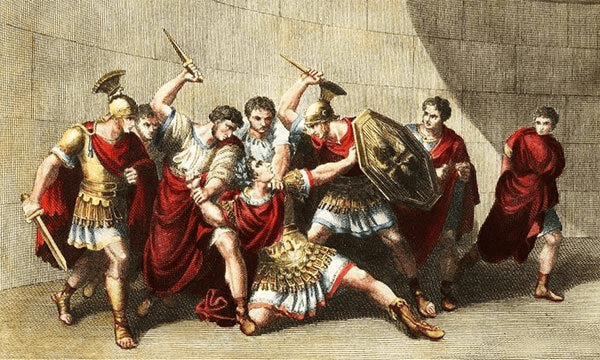Physical Address
304 North Cardinal St.
Dorchester Center, MA 02124
Physical Address
304 North Cardinal St.
Dorchester Center, MA 02124

History has shown us time and time again that no tyranny lasts forever. Whether it’s an empire built on fear or a dictatorship sustained by propaganda, oppressive systems eventually collapse under their own weight. But why? What causes these seemingly unstoppable regimes to crumble? And most importantly, what can we learn from history to recognize and resist modern forms of tyranny?
Tyranny is a powerful force, but it carries within itself the seeds of its own destruction. By exploring historical examples and modern parallels, we can uncover the inherent flaws that make oppression unsustainable.
Every tyrannical system begins by presenting itself as unbreakable. Leaders portray themselves as god-like figures, their control extending into every aspect of life. The propaganda machine works overtime to convince the people that resistance is futile.
Take the Roman Empire, for example. For centuries, it was considered indestructible. It controlled vast lands, had a mighty military, and established a complex bureaucracy. Yet, despite its strength, Rome fell—not because of a single catastrophic event, but due to internal corruption, overexpansion, and economic decay.
Today, governments and corporate entities exert unprecedented control through surveillance, censorship, and financial restrictions. But just like Rome, no amount of control can prevent the eventual collapse of a system that thrives on oppression.
Tyrants rely heavily on fear to maintain power. The Vikings, for example, used fear as a weapon in their raids, spreading terrifying stories that caused many to surrender before a fight even began. But fear can backfire—when people reach a breaking point, they no longer care about consequences.
The French Revolution is a perfect example of this. The monarchy had ruled through intimidation for centuries, but when the people had nothing left to lose, they turned their rage against their oppressors.
Governments use fear-based tactics to keep populations compliant—whether it’s the threat of terrorism, economic collapse, or pandemics. But history teaches us that once fear loses its grip, people rise up. Tyranny cannot survive when the masses stop believing in its power.
Every oppressive system requires a strong economy to sustain itself. Tyranny is expensive—militaries, surveillance, propaganda machines, and secret police all require funding. When that funding runs out, the system begins to crumble.
Look at the Soviet Union. The USSR maintained control through censorship, secret police, and a rigid command economy. But when economic stagnation set in, people could no longer be controlled by ideology alone. The system collapsed under its own inefficiency.
In our modern world, financial control is one of the primary ways governments keep people in check. Central banks manipulate currencies, digital transactions are monitored, and alternative economies are suppressed. However, just like in the past, when an economy can no longer sustain oppression, the system collapses.
Oppression only lasts as long as people allow it. History is full of resistance movements that eventually toppled tyrannies:
These movements share a common thread: people recognizing their power. Tyranny thrives on keeping people divided, but unity is its greatest weakness.
Tyranny doesn’t always come wearing a crown or a military uniform. Today, it hides behind bureaucracy, political correctness, and “safety measures.” The goal is the same—control.
✅ Mass surveillance under the guise of security
✅ Censorship disguised as “fact-checking”
✅ Financial restrictions (frozen bank accounts, digital currency control)
✅ Controlled opposition—leaders who pretend to fight the system but actually serve it
Recognizing these patterns is the first step toward dismantling them.
1️⃣ Control Your Own Economy – Use cash, trade goods, and support local businesses rather than relying on centralized banking systems.
2️⃣ Spread Unfiltered Information – Alternative media, encrypted messaging apps, and real-world conversations are key to bypassing censorship.
3️⃣ Build Local Communities – Tyranny thrives on isolation. Strengthen real-world relationships with like-minded individuals.
4️⃣ Resist Fear-Based Narratives – Every oppressive system uses fear to control people. Once you recognize this, their power over you weakens.
5️⃣ Stay Spiritually & Mentally Strong – History shows that strong-willed individuals have always been the greatest threat to tyrants.
History doesn’t repeat itself, but it rhymes. Every oppressive system has eventually collapsed, but not without effort from those who refused to comply. The question is: will we be the generation that accelerates the fall of modern tyranny?
If you want to dive deeper into resistance and reclaiming freedom, check out my other post: Tyranny in Disguise: How Governments Use Crisis to Expand Power
What do you think? Are we witnessing the fall of another empire, or will tyranny tighten its grip? Share your thoughts in the comments!